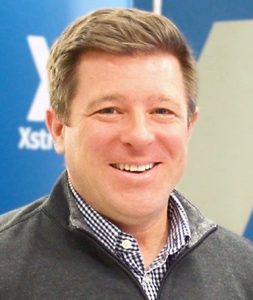
What are some of the industries that Stresstech serves, and what compels businesses within those industries to seek you out?
Stresstech, historically, has been successful within industries that value high integrity, high precision, stainless steel alloy parts that undergo extended service life. That’s linked itself very well to be initially successful in the transportation sector, mainly automotive and aviation.
Our biggest traditional market has mainly focused around Europe and the Americas. But we’ve expanded into a huge variety of other applications and global markets in recent years. We’ve had a lot of success in the energy markets, medical goods, additive manufacturing, and, recently, even space exploration. We’re seeing the biggest investment coming into our technologies and services from industries that have adopted into the smart automation side of production.
What is Barkhausen Noise Analysis, and how has Stresstech been able to commercialize this process?
Put simply, Barkhausen Noise Analysis is a nondestructive method involving the measurement of a noise-like signal that’s induced in a ferromagnetic material by applying a magnetic field. Think of it like a tiny electromagnet applied onto a ferrous surface, with some very sensitive instrumentation that goes with it. That allows us to accurately analyze the result of the signal produced to the Barkhausen Noise as the sensor moves across the surface of the part — characteristics like hardness and stress that directly affect the intensity of that Barkhausen Noise signal and different characteristics within it. With the Barkhausen Noise Inspection method, it’s extremely fast and simple to verify the success of a heat-treatment process, for instance, coupled with the ability to identify variabilities in resulting grain structure.
Stresstech has developed a suite of NDT equipment and services. Why is it important to look for possible defects in a nondestructive manner?
The NDT market has been changing with a lot of widespread adoption of automation. That’s occurred not just in the domestic manufacturing market, but globally. Where we’ve been successful is being able to adjust our knowledge and expertise to the needs of our existing customers and just ensuring our products and services are matched to those needs. It’s trying to stay on pace and even slightly ahead at times of where these industry trends are going, based on just that deep customer connectivity. The lab-based NDT techniques, they’re almost assuredly going to be present as a staple of testing and validation processes. But the lines are starting to blur between the lab-based NDT and the in-line quality control.
As our customers look to identify variables in the manufacturing processes early and accurately, we’ve made some huge gains in the lab side of things. We’ve got a range of X-ray diffraction equipment. We’ve managed to cut the time down needed to do an X-ray diffraction analysis up to 10 times faster than a lot of competitive, alternative equipment.
But those tests can only be made once you remove a part from a finished production line and send it to the lab for testing. Where we’ve been able to find our niche is to replicate the equivalent output of those tests using Barkhausen Noise Inspection. That means you can identify any of those manufacturing variabilities on the line with no interruption to the process, and you can also deduce what actually caused that defect. Invariably, if you only catch a flaw after your batch is complete with the lab, you need to go back and recheck and verify everything that’s happened. It can mean a lot of time, expense, even a lot of scrap.
The other area where NDT is being relied on more heavily, is safety critical inspections of in-service components in the aerospace industry. Barkhausen for that is the preferred path for this type of application as it permits us to actually inspect through surface coatings, like chrome and other nonferrous coatings.
How has Stresstech embraced advanced automation and integrated manufacturing processes?
Since we established the company back in 1983, we’ve had the benefit of engaging customers and recognizing how needs have changed over that time. We’ve been able to learn alongside a lot of cutting-edge manufacturing firms, like Tier 1 automotives and OEMs, etc., and aerospace OEMs as well. We get to see our technologies used, deployed, developed, and adapted over their lifetime. With those insights, we make sure we stay engaged with manufacturing trends and adapt the technology to meet those as customer needs change.
In what ways have recent advancements contributed to expanding your customer base?
Most of the growth that we’ve experienced recently has been dependent upon a lot of new and expanded applications within our existing client segments — part of this market that’s shifting. It’s been aligned on that as it has been expanding into entirely new customers, new segments, applications, etc.
Oftentimes, you’re understanding the underlying need from the customer’s manufacturing, production, or commercial perspective. That helps us align our solutions into those adjacent markets where we recognize a commonality of the application. Everything’s driven from the customers’ needs and making sure that we develop along with that.
Large organizations now have recognized Barkhausen and have started to set some industry standards, so that’s helped drive some of that adoption a bit better.
MORE INFO www.stresstech.com

























